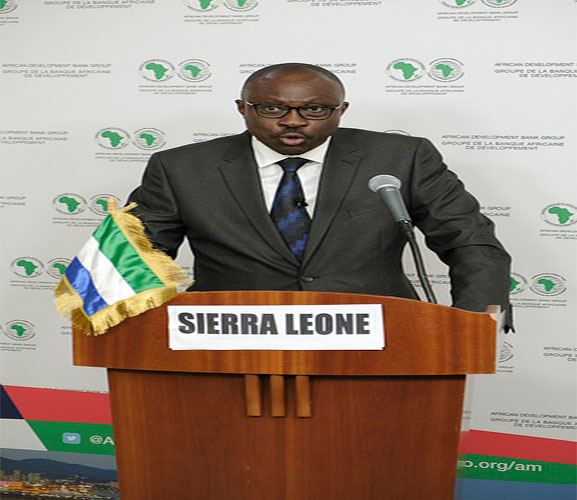By Amin Kef Sesay
For poor countries but resource rich countries like Sierra Leone, economic growth is the most powerful instrument for reducing poverty and improving the quality of life for all.
Only rapid, sustained economic growth has the power to generate virtuous circles of prosperity and opportunity. From what we see in countries like Senegal, Ivory Coast, Ghana, Kenya, Rwanda, Tanzania whose GDPs have passed USD1,500 per head, there is overwhelming evidence that rapid and sustained economic growth in the productive sectors is critical to making faster progress towards achieving of the SGDs – especially that having to do with halving the proportion of people living on less than $2 (Le20,000) a day.
The argument for embarking on a strong growth and creation of employment opportunities is compelling in any way we look at it. Strong economic growth advances human development, which, in turn, promotes economic growth.
It first and foremost improves incentives for parents to invest in their children’s education by sending them to school. This leads to the emergence of a strong and growing youth population that can make meaningful contributions to theirs and society’s continued growth and development.
However, most importantly, the extent to which economic growth reduces poverty depends on the degree to which the poor participate in the growth process and share in its proceeds. Thus economists talk of growth that does not benefit people.
What we see in most developing countries is that a few – the ruling classes, the educated, the elites, the business classes – own more than 70 percent of the wealth and assets whilst the majority wallow in abject poverty. As such; the pace and pattern of growth relate very much in reducing poverty.
The challenge for policy makers is to combine growth-promoting policies with policies that allow the poor to participate fully in the opportunities unleashed and so contribute to that growth.
Thus, a successful strategy of poverty reduction must have at its core measures to promote rapid and sustained economic growth through targeted public-private job creation investments; as well as targeted public works programs and projects that target the youthful unemployed.
Environmentally, with so much deforestation and destruction of the natural landscape going on by slash and burn farmers, miners, home builders and loggers, future economic growth will also need to be environmentally sustainable. Improved management of water and other natural resources is required.
With the proper institutions, growth and environmental sustainability may be seen as complements, not substitutes. The Government’s national tree planting initiative that would employ over 7, 000 youths is a good step in that direction. This can be extended to various agricultural activities in the quest for food security.
New technologies offer not only ‘catch-up’ potential but also ‘leapfrogging’ possibilities. New science offers better prospects across both productive and service sectors.
On the social front, Government should with its international development partners continue to spend heavily on health and education, which have a major impact on poor people’s ability to take part in growth opportunities.
Critically, more and better research on the drivers of growth will be needed to improve policy. But ultimately the biggest determinants of growth in a country will be its leadership, policies and institutions. This includes policies to make the labor market work better, removing gender inequalities and increase financial inclusion for especially our women who depend on business to empower themselves to be able to take care of their children.






